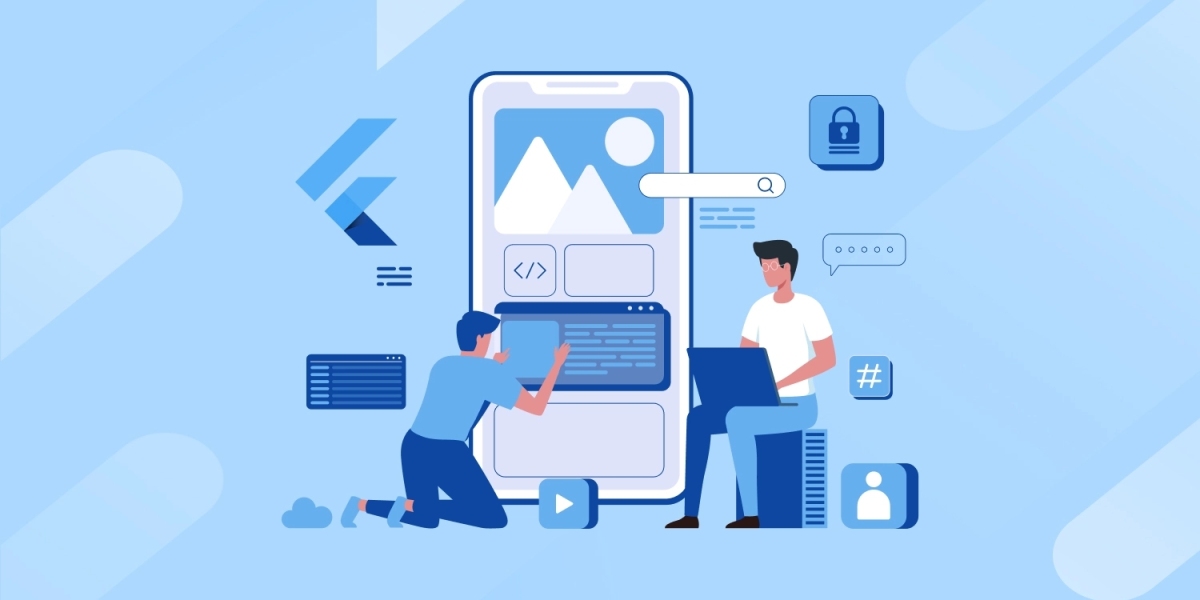Flutter, Google's open-source UI software development kit (SDK), has gained immense popularity among developers and businesses alike, positioning itself as a leading Flutter development company. Its ability to efficiently build cross-platform applications and its unique set of characteristics make it an ideal choice for modern app development projects. In this article, we will delve into the key characteristics of Flutter application development and explore how they contribute to the success of projects handled by a professional Flutter development company. By leveraging Flutter's capabilities and expertise, businesses can ensure the development of high-quality and innovative applications that cater to their users' needs and preferences.
1. Hot Reload: Enhancing Developer Productivity
One of the most significant advantages of using Flutter is its Hot Reload feature. This feature allows developers to see the changes they make to the codebase immediately reflected in the running app. It means developers can experiment, iterate, and fix issues without the need to restart the application. The real-time feedback offered by Hot Reload streamlines the development process, accelerates debugging, and enhances overall productivity. It enables developers to focus on building robust and engaging applications quickly.
2. Single Codebase, Multiple Platforms
Flutter's "write once, run anywhere" approach enables developers to create applications for various platforms, including Android, iOS, web, and desktop, from a single codebase. This characteristic not only reduces development time and effort but also ensures consistency across platforms. Instead of maintaining separate codebases for different platforms, developers can concentrate on creating a unified user experience and focus on adding value to the application.
3. Expressive and Fast UI Rendering
Flutter utilizes a 2D rendering engine called Skia, which allows it to create expressive and visually appealing user interfaces. The UI rendering is performed directly on the screen, bypassing native components, resulting in a consistent and smooth experience across devices and platforms. Flutter's reactive framework ensures that only widgets that need updating are rebuilt, optimizing performance and making it possible to create high-performance applications.
4. Rich Set of Customizable Widgets
Flutter comes with an extensive catalog of widgets that serve as the building blocks for constructing UI components. These widgets are highly customizable, making it easy to create visually stunning and interactive interfaces. From basic buttons and text inputs to complex animations and custom designs, Flutter's widgets empower developers to craft unique and engaging user experiences.
5. Native Performance with Dart
Flutter uses the Dart programming language, which is compiled to native code, enabling it to achieve native-like performance. Unlike other cross-platform frameworks that rely on a bridge to communicate with native code, Flutter directly compiles to ARM and x86 machine code. This approach results in faster execution and eliminates performance bottlenecks associated with bridges. Flutter apps demonstrate excellent performance, rivaling those developed using platform-specific technologies.
6. Open-source and Active Community
Being open-source, Flutter has garnered a vast and active community of developers. This community actively contributes to the platform by creating and maintaining packages, plugins, and extensions that enhance Flutter's capabilities. The open-source nature of Flutter also means that developers can access the source code, providing transparency and enabling them to understand how the framework works internally.
7. Platform-specific Design Adaptation
Flutter allows developers to create platform-specific designs and experiences effortlessly. It enables developers to adapt their application's look and feel to match the native design guidelines of Android and iOS. This characteristic ensures that users on each platform experience a familiar and intuitive interface, enhancing user satisfaction and usability.
8. Access to Native Features
Flutter provides robust native integration capabilities through platform channels. Developers can easily access and leverage platform-specific features and APIs using these channels. This feature allows developers to incorporate device-specific functionalities seamlessly and create feature-rich applications that provide a native-like experience.
9. Built-in Testing and Debugging Tools
Flutter comes equipped with a rich set of testing and debugging tools that aid developers in ensuring the quality and performance of their applications. Flutter's testing framework allows for widget testing, integration testing, and unit testing, making it easier to identify and fix bugs during the development process. Additionally, the framework offers excellent support for debugging, allowing developers to inspect and trace application behavior accurately.
10. Continuous Integration and Delivery (CI/CD) Support
Flutter supports various CI/CD platforms, enabling seamless integration into existing development workflows. This feature simplifies the process of building, testing, and deploying applications, making it easier for developers to maintain and update their projects regularly.
11. Internationalization and Localization Support
For developers building applications for a global audience, Flutter offers built-in internationalization and localization support. It allows developers to define and manage multiple languages and easily adapt the app's content based on the user's locale, making it a breeze to create apps that cater to a diverse user base.
12. Responsive UI and Device Adaptability
Flutter enables developers to create responsive and adaptive UIs that automatically adjust to different screen sizes and orientations. This ensures that the app looks great and functions well on various devices, from smartphones and tablets to web browsers and desktop screens.
13. Strong Community Support and Resources
With a rapidly growing community, Flutter provides abundant resources, including tutorials, documentation, and online forums. This extensive support network ensures that developers have access to valuable insights, solutions to common issues, and best practices to enhance their Flutter development skills.
Conclusion
Flutter's key characteristics, such as Hot Reload, single codebase, expressive UI rendering, rich widgets, native performance with Dart, and strong community support, make it a compelling choice for businesses seeking a reliable Flutter application development company. By leveraging these features, such a company can provide faster development cycles, exceptional user experiences, and the ability to reach a broader audience across multiple platforms.
As Flutter continues to evolve and gain more traction, it is set to become even more influential in the app development landscape. Embracing Flutter's capabilities through a professional Flutter application development company empowers businesses and developers to create innovative, feature-rich, and high-performance applications that stand out in today's competitive digital landscape.









